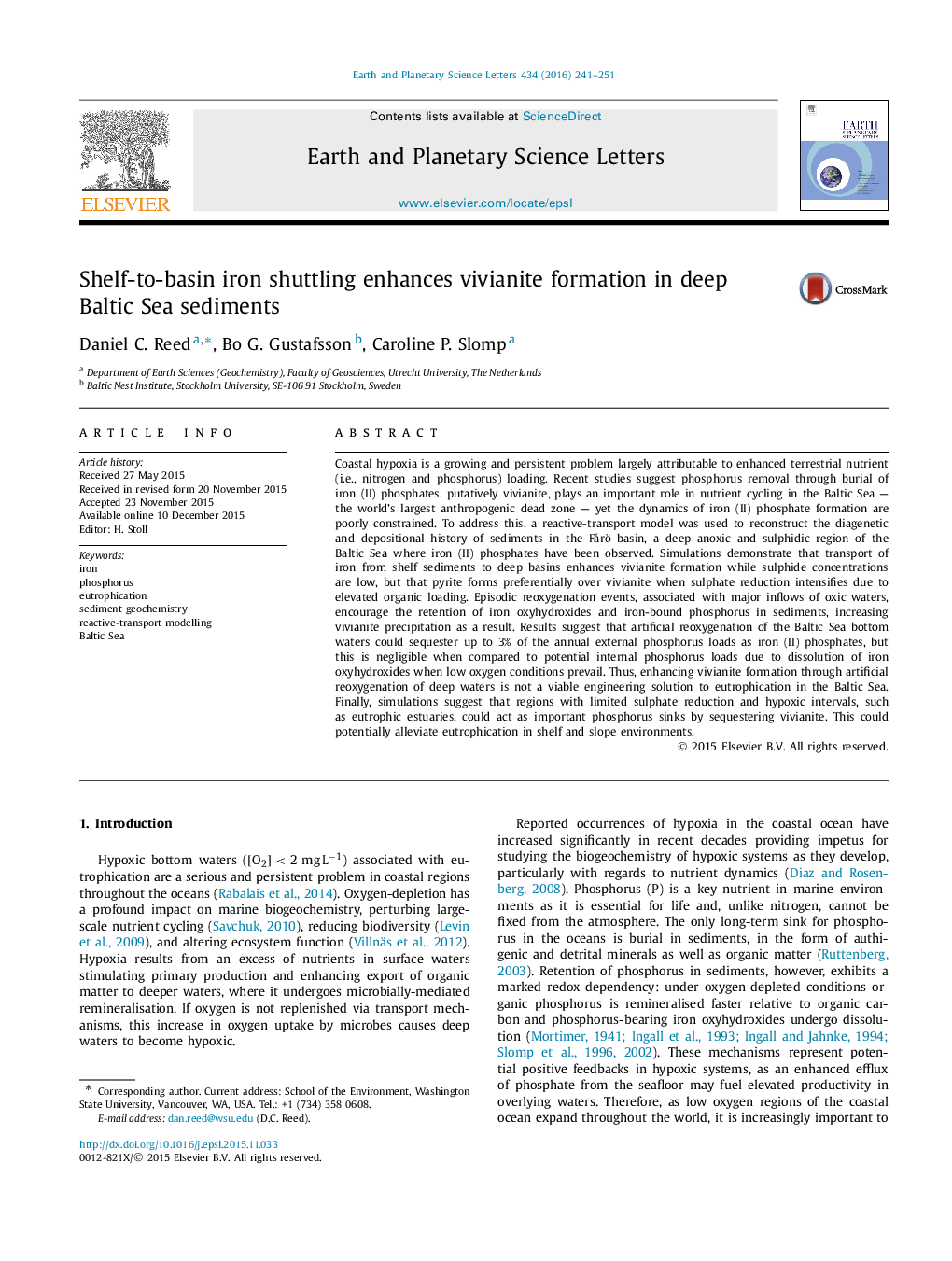| کد مقاله | کد نشریه | سال انتشار | مقاله انگلیسی | نسخه تمام متن |
|---|---|---|---|---|
| 6427744 | 1634722 | 2016 | 11 صفحه PDF | دانلود رایگان |
- We reconstruct sedimentary Fe, S and P dynamics for a euxinic basin in the Baltic Sea.
- Using a diagenetic model, we examine factors that regulate vivianite formation.
- Speciation of the Fe shuttle is key for vivianite, as it regulates Fe availability.
- Reoxygenation events increase sequestration of Fe-associated P in sediments.
- Vivianite may act as an important P sink in many estuaries.
Coastal hypoxia is a growing and persistent problem largely attributable to enhanced terrestrial nutrient (i.e., nitrogen and phosphorus) loading. Recent studies suggest phosphorus removal through burial of iron (II) phosphates, putatively vivianite, plays an important role in nutrient cycling in the Baltic Sea - the world's largest anthropogenic dead zone - yet the dynamics of iron (II) phosphate formation are poorly constrained. To address this, a reactive-transport model was used to reconstruct the diagenetic and depositional history of sediments in the FÃ¥rö basin, a deep anoxic and sulphidic region of the Baltic Sea where iron (II) phosphates have been observed. Simulations demonstrate that transport of iron from shelf sediments to deep basins enhances vivianite formation while sulphide concentrations are low, but that pyrite forms preferentially over vivianite when sulphate reduction intensifies due to elevated organic loading. Episodic reoxygenation events, associated with major inflows of oxic waters, encourage the retention of iron oxyhydroxides and iron-bound phosphorus in sediments, increasing vivianite precipitation as a result. Results suggest that artificial reoxygenation of the Baltic Sea bottom waters could sequester up to 3% of the annual external phosphorus loads as iron (II) phosphates, but this is negligible when compared to potential internal phosphorus loads due to dissolution of iron oxyhydroxides when low oxygen conditions prevail. Thus, enhancing vivianite formation through artificial reoxygenation of deep waters is not a viable engineering solution to eutrophication in the Baltic Sea. Finally, simulations suggest that regions with limited sulphate reduction and hypoxic intervals, such as eutrophic estuaries, could act as important phosphorus sinks by sequestering vivianite. This could potentially alleviate eutrophication in shelf and slope environments.
Journal: Earth and Planetary Science Letters - Volume 434, 15 January 2016, Pages 241-251
